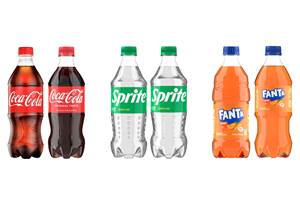Blow Molders Save Big On Compressed Air
Molders of PET containers are paying special attention these days to the large amounts of compressed air used in their blow molding operations and the huge energy cost associated with generating it.
Molders of PET containers are paying special attention these days to the large amounts of compressed air used in their blow molding operations and the huge energy cost associated with generating it. With the skyrocketing cost of energy, particularly in New England and California, many PET bottle makers have started to view compressed air as the “fourth utility,” along with gas, water, and electricity, according to Chris Gordon, president of Blackhawk Equipment, Arvada, Colo., an air-systems specialist who handles the compressed-air needs of bottle producer Ball Corp., Broomfield, Colo.
“PET molding requires ultra-high air pressures, in excess of 580 psi,” explains Gordon. Compressors typically have the largest motors in a blow molding plant, consuming millions of dollars worth of electricity each year. So large manufacturers like Ball and Southeastern Container Inc., Enka, N.C., are seeking the best approach to reduce compressed-air usage, reduce energy costs, and sometimes even earn lucrative utility rebates on electric power usage.
Gordon is a big believer in an innovative air-recovery system that recycles compressed air and significantly cuts energy costs. The Air Recovery System (ARS) from Technoplan Engineering SA of Geneva, Switzerland, recovers compressed air after bottle blowing, which still has enough residual pressure to be useful for many tasks. The U.S. distributor of the ARS system is Connell Industries Inc., Rahway, N.J., a control-systems engineering company.
The ARS system is installed between a blow molding machine’s exhaust system and the plant’s low-pressure air system. It captures and stores almost 50% of the dry, oil-free post-blow air at a pressure of 12 bar (170 psi). Reclaimed air is returned to the plant’s low-pressure air system to be used anywhere in the facility.
Quick payback
Ball installed the ARS system at its Baldwinsville, N.Y., bottle plant and netted a large energy savings, Gordon reports, though exact figures are unavailable. A large compressor was shut down, saving thousands of kilowatt-hours of energy, and maintenance costs were also reduced. Total savings generated from an ARS system typically results in payback within 8 to 12 months, according to Gordon.
In New England, where electric utility rates are among the highest, positive results have also been registered at Southeastern Container in Hudson, N.H., where 1.5 million PET bottles are produced each shift for Coca-Cola Co., its parent company. Southeastern installed two ARS systems on Sidel SBO 40 stretch-blow machines that produce 2L and 20-oz PET bottles. The ARS recaptures about 800 CFM of low-pressure air, according to John Fischer, Southeastern Container’s Northeast general manager. “That allows our compressors to rest,” he notes.
The results are impressive: The Hudson plant saves at least 5 million kwh per year and $300,000 in the first half of 2007 alone. That means the payback will be less than one year, even without the rebate from the local utility, Public Service of N.H., for about half the cost of the ARS systems. As a result, Southeastern Container is considering adding more ARS systems for 2L bottle production at other plants.
The ARS system costs approximately $4500 plus installation charges. About 350 systems have been installed worldwide at PET blow molding plants.
Related Content
How Inline Vision Inspection Can Minimize Scrap in Molding
Once viewed by injection and blow molders as a necessary evil, machine vision technology today can continuously monitor and improve production while reducing costs.
Read MoreMultilayer Solutions to Challenges in Blow Molding with PCR
For extrusion blow molders, challenges of price and availability of postconsumer recycled resins can be addressed with a variety of multilayer technologies, which also offer solutions to issues with color, processability, mechanical properties and chemical migration in PCR materials.
Read MoreCoca-Cola’s Redesign of Small PET Bottles Pushes Lightweighting Below Prior ‘Floor’
Coca-Cola thought it had reached the limits of lightweighting for its small PET carbonated soft drink bottles. But a “complete redesign” led to a further 12% reduction.
Read MoreBreaking News From NPE2024
Here is a firsthand report of news in injection molding, extrusion, blow molding and recycling not previously covered.
Read MoreRead Next
For PLASTICS' CEO Seaholm, NPE to Shine Light on Sustainability Successes
With advocacy, communication and sustainability as three main pillars, Seaholm leads a trade association to NPE that ‘is more active today than we have ever been.’
Read MoreBeyond Prototypes: 8 Ways the Plastics Industry Is Using 3D Printing
Plastics processors are finding applications for 3D printing around the plant and across the supply chain. Here are 8 examples to look for at NPE2024.
Read MorePeople 4.0 – How to Get Buy-In from Your Staff for Industry 4.0 Systems
Implementing a production monitoring system as the foundation of a ‘smart factory’ is about integrating people with new technology as much as it is about integrating machines and computers. Here are tips from a company that has gone through the process.
Read More














